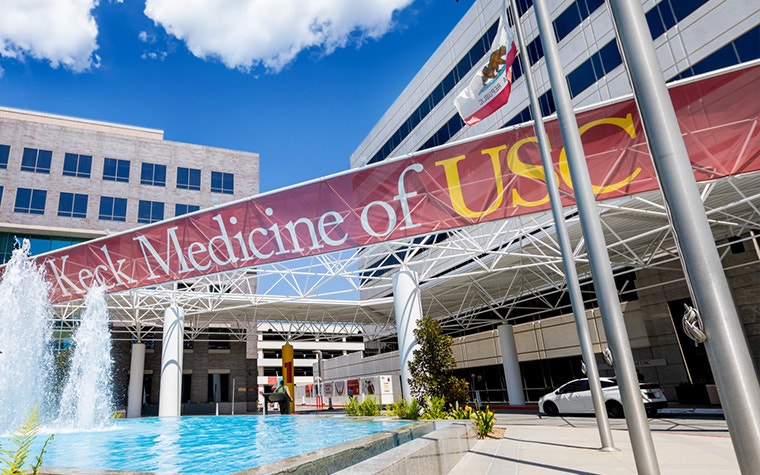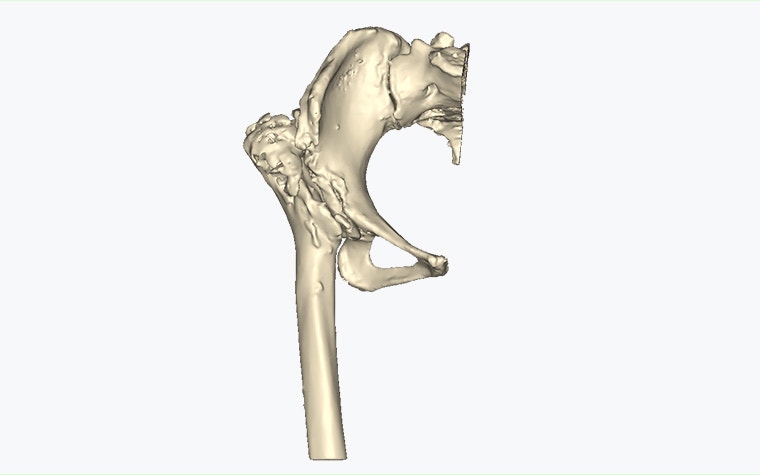CUSTOMER STORY
Collaborative Surgical Planning Thrives at USC with Advanced 3D Visualization

In the world of complex surgical care, the ability to see and understand anatomy in 3D makes a world of difference for medical professionals approaching challenging cases. At Keck Medicine of the University of Southern California, the Center for Advanced Visual Technologies in Medicine (VISTA) is at the forefront of this innovation. With advanced 3D visualization tools like those found in Materialise Mimics, the VISTA team is redefining precision in surgical planning — enhancing patient outcomes and experiences.
Under the leadership of Summer Decker, PhD, and Jonathan Ford, PhD, the VISTA program combines state-of-the-art visualization technology with a collaborative, multidisciplinary approach. The impact is twofold: advancing care for patients with even the most complex anatomical challenges while setting a new standard for how hospitals can adopt transformative technology.
Addressing complex anatomy with clarity and confidence
When Drs. Decker and Ford launched the VISTA program, they expected to tackle difficult cases. What they didn’t anticipate was the sheer frequency of patients with unique and atypical anatomy requiring advanced visualization to guide their care.
One such case involved a patient with a history of hip dysplasia and multiple prior surgeries. Her anatomy was significantly altered, presenting challenges that traditional imaging methods struggled to effectively visualize. Using Materialise Mimics, the team created a 3D model of her anatomy, revealing an unusual femoral head-like structure formed from a portion of the trochanter.


This visualization provided a level of detail that would have been impossible to achieve with 2D imaging alone. The team viewed the anatomy from multiple angles, gaining insights critical for surgical planning.
“When I have the 3D visualization in Mimics — it’s anatomy on a whole new level.”
— Nathanael Heckmann, MD
“We review the case with the orthopaedic surgeons on a large monitor,” explains Dr. Decker. “They can plan with us. We show them the anatomy in Mimics Core and 3-matic. Once we get the all-clear, we get to work on the print. Mimics is so flexible; the collaboration possibilities are incredible.”
This real-time collaboration between radiologists, engineers, and surgeons ensures that every aspect of the patient’s anatomy is understood before entering the operating room. Everyone is on the same page, and the result is greater surgical precision and a higher level of confidence among the entire care team.
Precise planning, elevated outcomes
For orthopaedic surgeon Nathanael Heckmann, MD, advanced 3D visualization has enriched how he prepares for and performs complex surgeries. Traditional imaging methods often fall short when dealing with intricate anatomy. With Mimics, Dr. Heckmann can view, manipulate, and analyze a patient’s anatomy in unprecedented detail.
In this particular case, Dr. Heckmann used the technology to plan a complex osteotomy and reshape the pelvis to accommodate a hemispheric acetabulum component. "When I have the 3D visualization in Mimics — it’s anatomy on a whole new level," he explains. "I can ensure every step is planned before entering the operating room.”
The benefits extend beyond the planning phase. During surgery, the preoperative 3D visualizations serve as a guide, enabling precise execution and reducing the likelihood of complications. Postoperatively, he refers to the same visualizations again to verify the success of the procedure, providing assurance for both the surgical team and the patient.
At USC’s academic medical center, these tools also play a vital role in education. Residents and fellows train on 3D models, gaining hands-on experience that enhances their understanding and prepares them to assist in surgery. This dual role of education and execution ensures that the next generation of surgeons is equipped with the tools and skills to deliver exceptional care.
Fostering trust and understanding with patients
This approach's most powerful impact is felt by the patient. For many, traditional imaging can feel abstract and difficult to grasp. Materialise Mimics bridges this gap by creating detailed, patient-specific models — either virtual or printed for physical handling — that make even the most intricate anatomy accessible.
Dr. Decker refers to this as achieving “true informed consent.” By showing patients and families a 3D representation of the condition and the planned surgical approach, they can more easily build trust with the medical team and understanding of the treatment.
“For pediatric patients especially, this is transformative,” says Dr. Decker. “Parents can see and interact with the model, which helps them grasp the complexity of the procedure. It provides reassurance and strengthens their confidence in the medical team.”
This enhanced understanding not only reduces anxiety but also empowers patients and families to make informed decisions about their care. Hospitals that integrate advanced visualization into patient education see significant benefits in terms of satisfaction and trust — qualities that enhance their reputation for excellence in care.
Leading the new standard in patient care
At Keck Medicine of USC, the VISTA team’s work is charting a new course for surgical planning. By combining 3D modeling with a collaborative, multidisciplinary approach, the team is improving outcomes, enhancing education, and empowering patients.
For hospitals looking to adopt similar innovations, VISTA's approach is an excellent model to replicate.
As Dr. Decker puts it, “If you want to have longevity in your career, you must embrace disruptive technology. We in radiology need to be experts in our field, reviewing cases with surgeons on the Mimics software, showing them the segmented anatomy — this is the approach for the future of radiology.”
Their work demonstrates the technology's profound impact on surgical planning, patient education, and institutional efficiency. For hospitals ready to embrace the future, the opportunity is clear: advanced visualization is the key to delivering better care, greater precision, and stronger connections with patients.
L-104749-01
Share on:
You might also like
Never miss a story like this. Get curated content delivered straight to your inbox.
